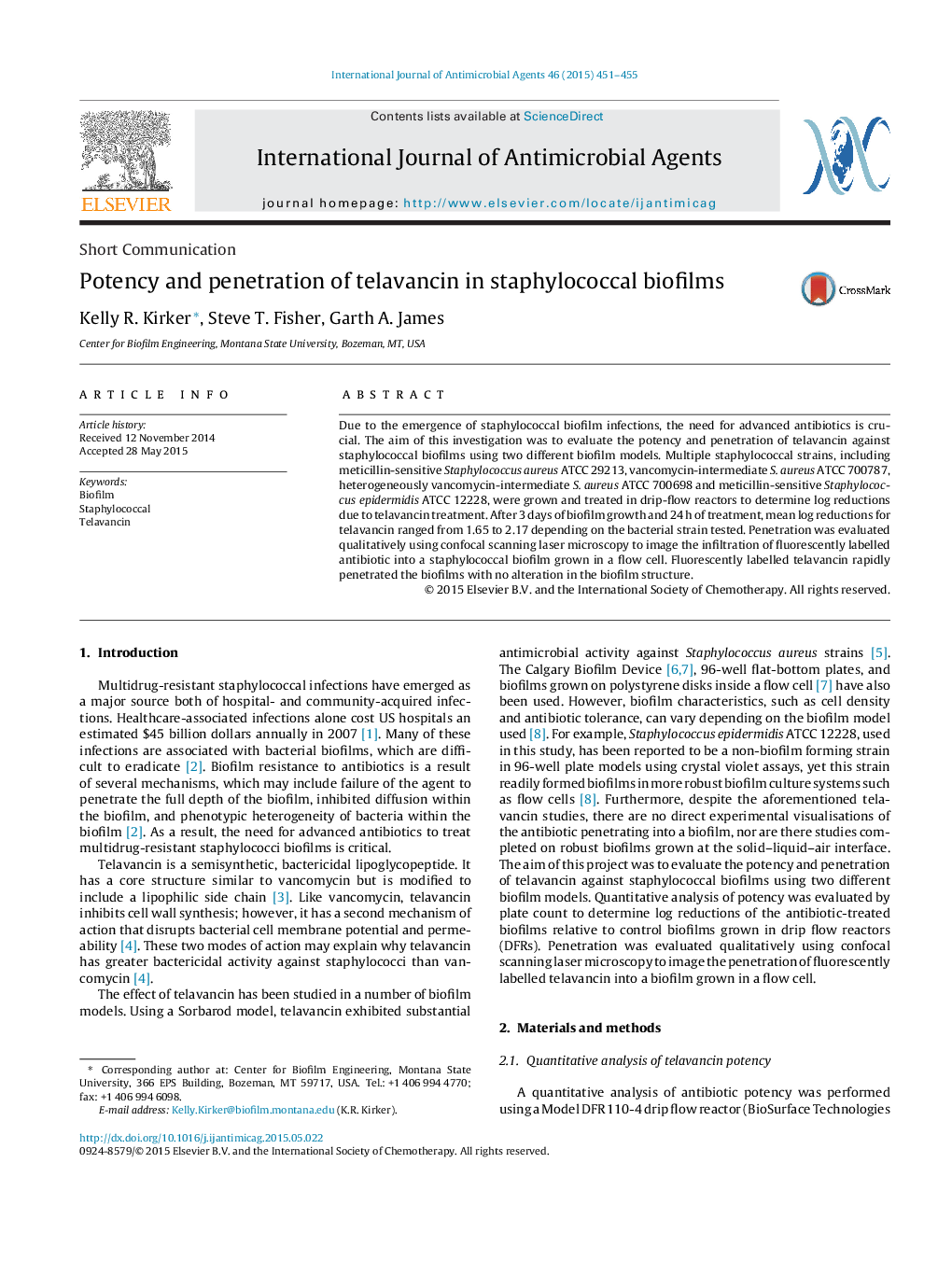| Article ID | Journal | Published Year | Pages | File Type |
|---|---|---|---|---|
| 3358580 | International Journal of Antimicrobial Agents | 2015 | 5 Pages |
•Staphylococcal biofilms were grown in drip-flow and capillary flow-cell reactors.•Telavancin-treated biofilms had significantly reduced mean log densities.•Antibiotics were visualised penetrating a Staphylococcus aureus biofilm.
Due to the emergence of staphylococcal biofilm infections, the need for advanced antibiotics is crucial. The aim of this investigation was to evaluate the potency and penetration of telavancin against staphylococcal biofilms using two different biofilm models. Multiple staphylococcal strains, including meticillin-sensitive Staphylococcus aureus ATCC 29213, vancomycin-intermediate S. aureus ATCC 700787, heterogeneously vancomycin-intermediate S. aureus ATCC 700698 and meticillin-sensitive Staphylococcus epidermidis ATCC 12228, were grown and treated in drip-flow reactors to determine log reductions due to telavancin treatment. After 3 days of biofilm growth and 24 h of treatment, mean log reductions for telavancin ranged from 1.65 to 2.17 depending on the bacterial strain tested. Penetration was evaluated qualitatively using confocal scanning laser microscopy to image the infiltration of fluorescently labelled antibiotic into a staphylococcal biofilm grown in a flow cell. Fluorescently labelled telavancin rapidly penetrated the biofilms with no alteration in the biofilm structure.
